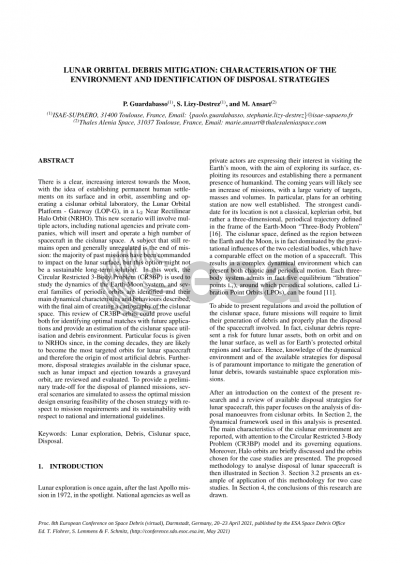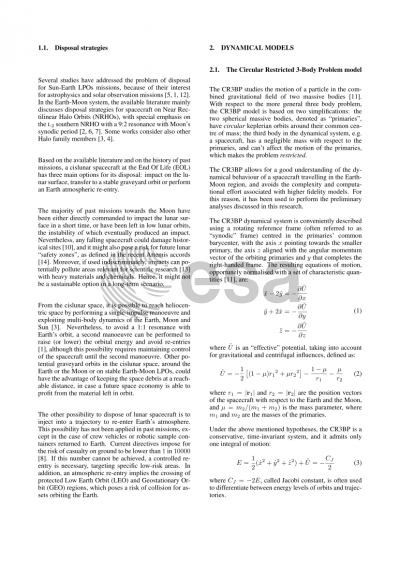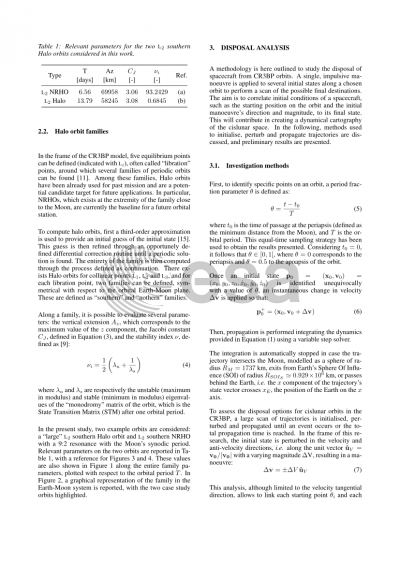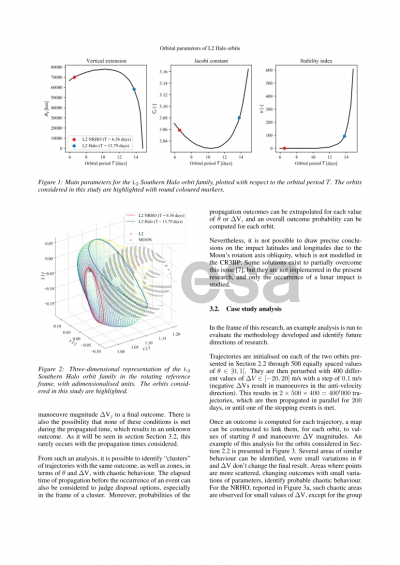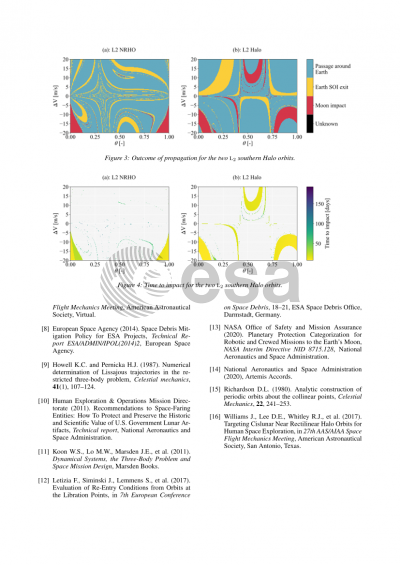Document details

Abstract
There is a clear, increasing interest towards the Moon, with the idea of establishing permanent human settlements on its surface and in orbit, assembling and operating a cislunar orbital laboratory, the Lunar Orbital Platform-Gateway (LOP-G), in a L2 Near Rectilinear Halo Orbit. This new scenario will involve multiple actors, including national agencies and private companies, which will insert and operate a high number of spacecraft in the cislunar space. A subject that still remains open and generally unregulated is the end of mission: the majority of past missions have been commanded to impact on the lunar surface, but this option might not be a sustainable long-term solution. In this work, the Circular Restricted Three Body Problem (CR3BP) is used to study the dynamics of the Earth-Moon system, and several families of periodic orbits are identified and their main dynamical characteristics and behaviours described, with the final aim of creating a cartography of the cislunar space. This review of CR3BP orbits could prove useful both for identifying optimal matches with future applications and provide an estimation of the cislunar space utilisation and debris environment. Particular focus is given to NRHOs since, in the coming decades, they are likely to become the most targeted orbits for lunar spacecraft and therefore the origin of most artificial debris. Furthermore, disposal strategies available in the cislunar space, such as lunar impact and ejection towards a graveyard orbit, are reviewed and evaluated. To provide a preliminary trade-off for the disposal of planned missions, several scenarios are simulated to assess the optimal mission design ensuring feasibility of the chosen strategy with respect to mission requirements and its sustainability with respect to national and international guidelines.
Preview
